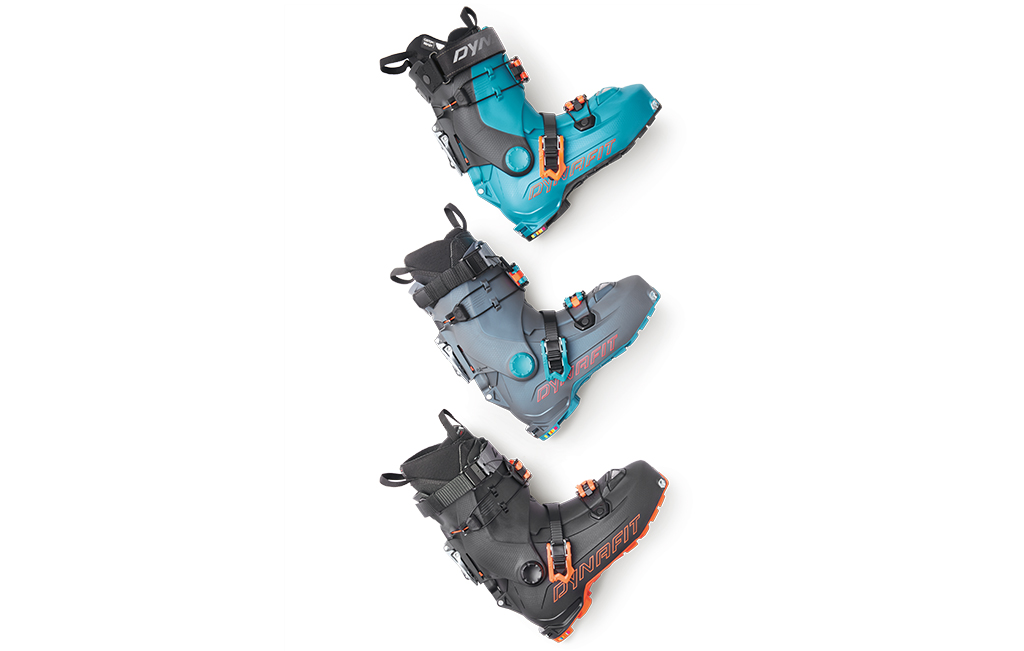A version of this story appeared in the winter 2020 issue of Uncommon Path.
It’s early fall in Whistler, Canada, and professional skier Eric “Hoji” Hjorleifson, 36, has “come up for air,” as he likes to say, from his dungeon of creativity. The nonsnowy season is usually when Hjorleifson gets to work on his various skiing inventions—tinkering, tooling, staring down tiny mechanical problems for up to 36 hours at a time. But this past summer, his 1970s turning machine stopped working. So without much experience, he set about rebuilding the lathe and motor. They took two months to fix, which put the rest of his prototypes and projects on hold and turned his autumn into an even busier period than usual.
But, thankfully, fresh snow already blankets the highest peaks in British Columbia’s Coast Mountains. Hjorleifson knows he will be skiing deep powder soon enough, a thought that keeps his stress in check while his gears turn ever more rapidly.
Until then, he will continue inventing and improving his prototypes in his workshop, which he built in the bowels of the townhome he shares with his wife, three-time world champion freeskier Jen Ashton. It’s hardly glamorous—more like a cage with tools and just enough light to see what he’s doing. In addition to perfecting a new tail-clip system between his signature ski models and climbing skins, Hjorleifson has been working on the latest iteration of his revolutionary ski-boot design for Dynafit. His task? To improve on the Hoji Free, which followed last year’s debut of the Hoji Pro, a concept that he spent five years honing with Dynafit binding inventor Fritz Barthel. “Progressing the boot design is never over,” says Hjorleifson. “And I have a couple of new ideas that will hopefully lead to future projects.” All of which is code for: “You haven’t seen anything yet.”

Photo by Ian Bondi
In early 2014, Hjorleifson presented an idea to Barthel, 59, who is known across Europe as a pioneer in technical product design. His goal was to create a way to switch from ski mode to climbing mode, and vice versa, without having to adjust anything else on the boot. “I said to him, ‘I think it’s a cool idea, so if you want, you can stay with me,’” Barthel recalls. A couple of weeks later, Hjorleifson showed up at Barthel’s farmhouse in Bad Häring, Austria, and they got to work on the first Hoji Pro prototype. “I was like a kid, a sponge,” Hjorleifson says. “I have a whole book of all our drawings and notes.”
The boot sold like fireworks on Independence Day and received stellar reviews and industry accolades (including an ISPO Award). But the commercial success overshadowed the anomalous recipe that brought it to life: Not only had a North American freerider opened the eyes of one of the industry’s preeminent designers deep in the Austrian Tyrol, but Hjorleifson had also led the way to completion. “Everything that he said we had to do proved right,” Barthel says. “I learned something new.”
Hjorleifson, a native of Canmore, Alberta—a gritty mountain town about 15 miles from Banff—grew up ski racing at Lake Louise. His parents did everything from road construction to carpentry while raising Hjorleifson and his brother, Steve. Hjorleifson was a teenager when he went to work as a stonemason for his father. “Shoveling sand, moving rocks, rock picking,” he says. “We’d drive all over Alberta and into B.C. with a 1972 Dodge Sportsman van, get into these creek beds and pick up beautiful purple and green rocks.”

From top: Dynafit Hoji PX (Women’s), $699.95; Dynafit Hoji Pro Tour (Women’s), $799.95; Dynafit Hoji Pro Tour (Men’s), $799.95
Hjorleifson transitioned from racing to freeskiing in his late teens. He liked jumping, and for a while he ranked among the top big-air skiers in Canada, despite competing on giant slalom skis and with bent poles. Then he shifted his attention to backcountry lines—specifically, touring up mountains
on skins, then jumping off cliffs taller than buildings. Few others were combining those disciplines, which, of course, is how he got involved with boot design: He often needs equipment that doesn’t exist.
Hjorleifson, who moved to Whistler full-time 13 years ago, says the reason he works so hard on his mechanical projects is because he wants to have a job after he’s done “jumping off cliffs for money in front of a camera.” There’s truth to that, but he also has a long list of problems that he wants to solve across a wide range of products.
For now, though, just up for air, he is content to talk about the coming season. It’s a formula he knows well, because like everything else in his life, he designed it. First, he’ll spend a powdery month in the Selkirks teaching adults about backcountry skiing at Golden Alpine Holidays. If their schedules line up, he’ll join Ashton—who coaches for the Whistler Freeride Club—on hut trips and snowmobile missions outside Whistler, as well as resort days with her squadron of up-and-coming ski stars. He’ll test his prototypes in all conditions. Lest one forget, Hjorleifson’s invention supports a lifestyle—one that still revolves around skiing.
